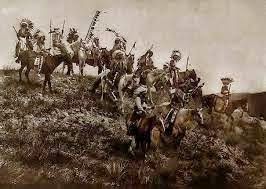 |
| James M. Dodson |
While gold was stored at area mines, it was well guarded. But when it came time to ship the gold to one of the banks in Prescott, it was at its most vulnerable to robbery.
News of any gold shipments from the mines was impossible to keep secret. Newspapers would report on it. So when a gang of desperadoes from New Mexico suddenly showed up in town, the owner of the Little Jessie mine, John Jones, decided to take precautions for his upcoming gold shipment to the Prescott Bank.
He hired former Prescott marshal (effectively chief of police), James M. Dodson to escort and insure the safety of the gold shipment from the Big Bug area mine.
Soon, "Dodson's skill as a sleuth uncovered an advance plot." (*1) He learned that the gang of would-be-robbers had recruited the driver of the gold shipment!
However, instead of changing drivers, Dodson decided to hatch a ruse to foil the robbery.
































